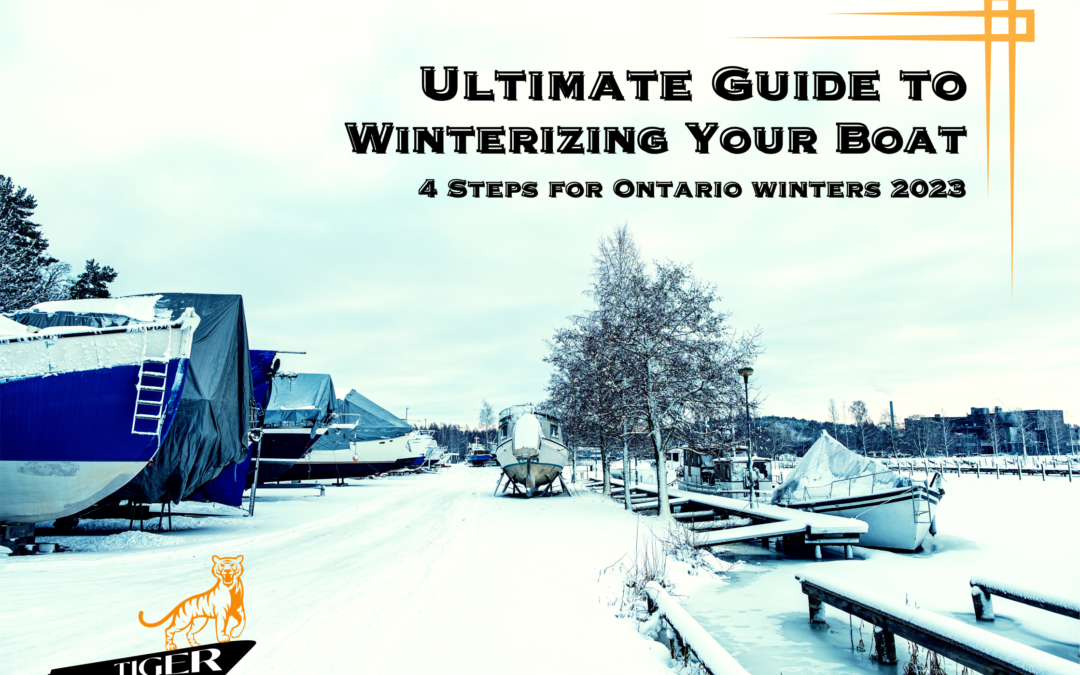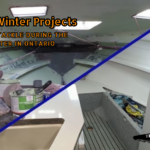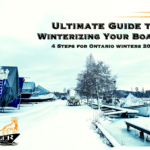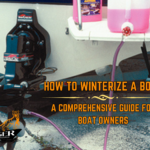Winterization of Boats: A Comprehensive Guide for Boat Owners in Ontario
Proper winterization is crucial for boat owners in Ontario, considering the region’s harsh winter climate. This guide provides a comprehensive overview of the winterization process, emphasizing its benefits in terms of maintenance, preservation, and cost-saving.
I. Preparing for Winterization:
To ensure a smooth winterization process, it is crucial to plan ahead and schedule winterization in advance. You should consider the following steps:
1. Find a Reliable Winterization Service Provider:
Research and identify a reputable boat winterization service provider. Schedule an appointment in advance to ensure availability and timely service.
2. DIY Winterization:
Alternatively, boat owners can choose to perform the winterization process themselves. However, it is essential to gather the necessary knowledge, tools, and materials for a successful DIY winterization.
3. Winterization Checklist:
Follow a comprehensive checklist to ensure all necessary tasks are completed. The checklist should include the following:
- Make a list of repair work that needs to get done during the winterization process.
- Prepare a list of work the needs to be completed before launch in the spring.
- Thoroughly clean the boat, both inside and out, to remove any dirt, debris, or saltwater (if any) residue.
- Remove and store any equipment that could be damaged by cold temperatures or moisture, such as electronics, safety gear, and cushions.
- Drain all water systems and tanks to prevent freezing and potential damage.
- Treat the fuel system by adding a fuel stabilizer to prevent fuel degradation and damage caused by condensation.
- Flush the engine with fresh water to remove any salt or contaminants, and drain the exhaust system.
- Lubricate engine components, change oil and filters and ensure all fluid levels are topped up.
- Treat the cooling system, head and water tank with antifreeze to prevent freezing and potential cracking.
- Remove and store the boat’s battery in a safe, dry location.
- Secure the boat for storage by properly covering it to protect it from snow, ice, moisture, and UV rays.
II. Winterization Procedures:
A. Exterior and Hull:
Taking care of the boat’s exterior is crucial for its protection during the winter months. Some of the procedure that you should follow are:
1.Cleaning and Waxing:
Thoroughly clean the boat’s hull, deck, and other exterior surfaces using a boat-specific cleaner . Remove any stubborn stains or grime. Once clean, apply a layer of wax to provide an additional protective barrier against the elements.
2. Proper Covering and Protection:
Invest in a high-quality boat cover or consider shrink wrapping the boat. Ensure the cover or shrink wrap is properly installed, providing a secure and weather proof seal. This will prevent snow, ice, and moisture from accumulating and potentially causing damage to the boat’s exterior.
B. Engine and Fuel System:
Properly winterizing the boat’s engine and fuel system is essential for preventing damage and ensuring smooth operation in the following boating season. You should consider the following procedures:
1. Fuel System Stabilization:
Add a fuel stabilizer to the fuel tank to prevent fuel degradation and protect against moisture-related issues. Follow the manufacturer’s instructions regarding the appropriate amount of stabilizer to use based on the fuel tank capacity.
2. Engine Flushing and Drainage:
Flush the engine with fresh water to remove any salt, sand, or other contaminants. This will help prevent corrosion during the winter months. Drain the exhaust system to ensure no water is left inside, which could freeze and potentially damage the system.
3. Lubrication and Fluid Changes:
Lubricate all necessary engine components according to the manufacturer’s guidelines. Change the engine oil and filters to remove any contaminants that could affect engine performance and longevity. Check and top up fluid levels, including coolant, power steering fluid, and gear oil.
4. Cooling System Antifreeze:
To protect the cooling system from freezing temperatures, add an appropriate antifreeze solution as recommended by the boat’s manufacturer. This will prevent the formation of ice and potential damage to the cooling system components.
5. Battery Storage:
Remove the boat’s battery and store it in a dry and safe location, normally at home in the garage or workshop. Clean the battery terminals and apply a thin layer of petroleum jelly to prevent corrosion. Consider using a battery maintainer or trickle charger to maintain the battery’s charge during the winter months.
C. Interior and Systems:
Properly winterizing the interior and systems of the boat is essential for preventing damage, mold, and mildew. Some of the procedure that you should follow are:
1.Plumbing System Drainage:
Drain all water from the boat’s plumbing system, including freshwater tanks, hot water heaters, and toilets. Make sure the put antifreeze in the bilge, head system, and water tank. This will prevent freezing and potential damage to the plumbing systems.
2.Electronics and Electrical Systems:
Protect electronics and electrical systems from moisture by disconnecting and removing them from the boat, if possible. Store these items in a dry location. If it is not feasible to remove the electronics, consider using moisture-absorbing products or desiccants to minimize moisture buildup.
Fabric Item Storage:
Remove cushions, upholstery, curtains, and other fabric items from the boat. Clean and dry them thoroughly before storing them in a dry location. This will prevent mold and mildew growth during the winter months.
Interior Cleaning and Ventilation:
Clean the boat’s interior thoroughly, removing any debris, food particles, or other potential attractants for pests. Wipe down surfaces with a boat-specific cleaner to minimize the risk of mold and mildew growth. Ensure proper ventilation by opening hatches or using a dehumidifier to reduce moisture levels.
III. Choosing a Boat Storage Option:
Boat owners in Ontario, have various storage options available for the winter months. Consider the following options:
1. Indoor Storage:
Indoor storage provides the highest level of protection against the elements. Choose a reputable indoor storage facility that offers climate-controlled units to ensure a consistent temperature and humidity level throughout the winter. Some storage facilities offer heated storage options. These facilities maintain a controlled temperature throughout the winter, providing additional protection against freezing temperatures.
2. Shrink Wrapping:
Shrink wrapping the boat provides a protective barrier against snow, ice, and moisture. Look for professionals who offer shrink wrapping services, and ensure they use high-quality materials and techniques for a secure and weatherproof seal.
Regardless of the storage option chosen, ensure the facility is secure, well-maintained, and equipped with appropriate security measures to safeguard the boat during its winter storage.
IV. Maintenance and Post-Winterization Tips:
1. Post-Winterization Maintenance Routine:
Before launching the boat in the spring, perform a post-winterization maintenance routine. This may include checking all systems and components, inspecting for any signs of damage or wear, and verifying fluid levels.
2. Regular Inspections and Servicing:
Throughout the boating season, conduct regular inspections and servicing (Find a few boat service shops to put here) of the boat’s systems and components. This will help identify any potential issues early on and prevent more significant problems down the line.
3. Manufacturer’s Guidelines:
Refer to the boat’s manufacturer guidelines for specific maintenance procedures and recommended service intervals. Following these guidelines will help ensure optimal performance and longevity for your boat.
Proper winterization is essential for boat owners in Ontario, to maintain their boats and avoid costly damages. By following the comprehensive guidelines provided in this guide, you can protect your investment and ensure your boat is ready for the water when spring arrives. Plan ahead, follow the winterization checklist, and consider professional services or DIY methods for a successful winterization process. Take care of your boat’s exterior and hull, engine and fuel system, and interior and systems. Choose a suitable storage option, such as indoor storage, shrink wrapping, or heated facilities, to safeguard the boat during the winter months. Remember to perform post-winterization maintenance and adhere to the manufacturer’s guidelines for optimal boat performance. By prioritizing winterization, you can enjoy a well-preserved and ready-to-go boat when the boating season returns.





